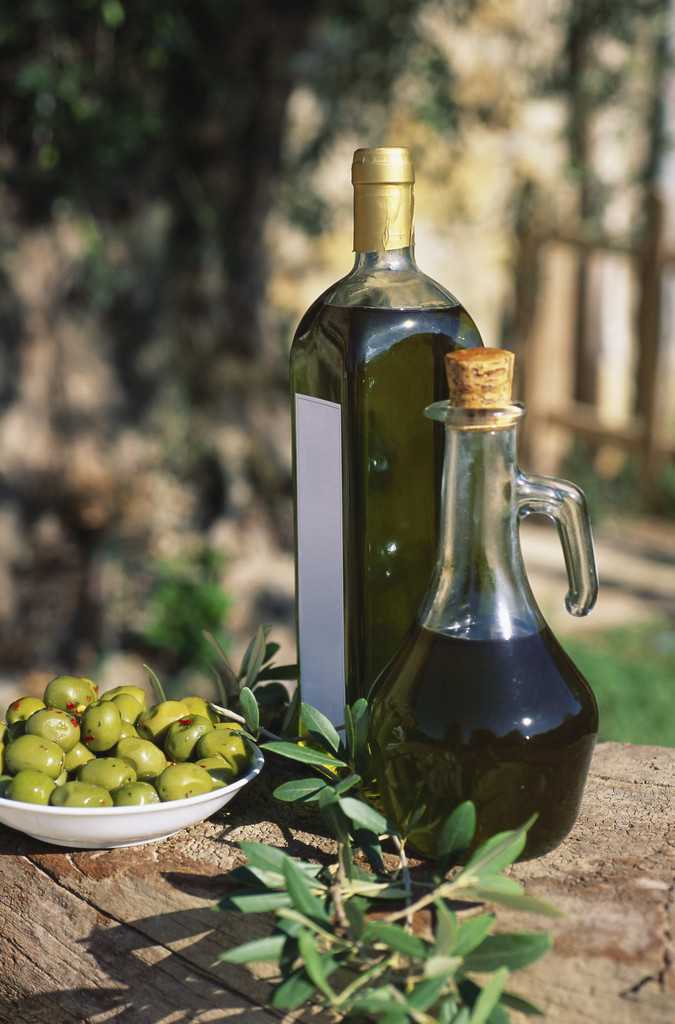
In step 1 on this series I outlined how to evaluate how you’re currently doing. If you haven’t already read this post I advise you to do so before reading this one.
In this step of the 2-week eating experiment series we will address the following three exciting topics:
- What to eat & drink during the experiment
- How much to eat and what good eating habits are
- Possible adverse effects from changing how you eat and how to avoid these
Here are the other posts in this series:
- Introduction to the 2-week experiment: Why you should do it and its process
- Step #1: Evaluate how you’re currently doing
- Step #3: How to successfully carry out the experiment
- Step #4: It’s done and I love it. What’s next? Optimize of course!
Before we jump into the details please note the following: I have decided to be to the point and simply state the behaviors needed in order to successfully complete the experiment. This post would be books long if I tried to answer “why I recommend what I recommend” as part of this post. For the ones of you who feel you need more data and references before you can start the experiment I respect that. In the upcoming posts I will address the reasoning behind my recommendations but it will take some time for me to write all these posts. Some of you might argue I should have started with the reasoning and then provided the experiment. Again, I understand that argument. However, there are two reasons why I decided not to do that
- I generally believe in being to the point and first suggesting something and then explaining why (Barbara Minto anyone?)
- Friends, family members, and others have asked me to do this post now so that they can start changing how they eat. I want to leverage their motivation and get them started living a healthier life
Finally, I am no doctor, certainly not your personal health advisor. If you have any medical issues please do coordinate with your doc before starting the experiment.
Having said that, let’s get to it!
The five rules of what to eat & drink during the 2-week experiment
During the experiment we are aiming for the following macro-nutritional composition:
- Fats: 70-80% of your calories should come from healthy fats
- Protein: 10-20% of your calories should come from protein
- Carbohydrates: 5-10% of your calories should come from carbohydrates
Don’t worry if you’re not sure about how to reach this nutritional composition. By following the rules below you will succeed and you will reap the benefits of looking, feeling, and performing better. You will eat until you’re no longer hungry and you will enjoy delicious, tasty foods. Sounds like “high gain, no pain” to me!
Rule #1: Eat lots of healthy fats!
Ideally, you want about 70-80% of your calories to come from healthy fats. Example foods are avocados, butter (grass-fed preferably if you can get it), coconut oil, palm oil, olive oil, fatty meats (grass-fed preferably),bacon, poultry, eggs (from truly organic chickens, high omega-3 eggs preferably), high fat dairy products that have no sugar and little carbohydrate content (cream, high fat milk, yoghurt, cheese (preferably the older ones) etc. [1]. It’s especially important to eat lots of coconut oil as it will reduce the time it takes for your body to adapt to the new way of eating. Also, it’s crucial to eat enough fat. If you eat enough you will not feel hungry. If you don’t you’ll be a grumpy crybaby and the experiment will not be a success. Just do it!
Rule #2: Eat vegetables and some fruit, berries and nuts
Preferably you want to eat fresh, locally grown vegetables but the really important thing here is that you just eat vegetables. Don’t worry about exactly how much vegetables you need to eat, however add a portion to every meal. If you think it’s a struggle to eat vegetables for breakfast make a shake and drink both the juice and the pulp from the vegetables. Alternatively, skip the vegetables for breakfast and eat more during the rest of the day. It’s preferable to eat vegetables that are prepared with butter, oils, dressings etc. Not only does it add great taste but you need lots of fats and fats help the body digest some vitamins & minerals. For a list of some of the healthiest vegetables look here, here and here.
Enjoy fruits, berries, and nuts in moderation. A quarter of a banana, a few berries, and some nuts are ok but any more than that is not recommended as it will slow down your progress of feeling, looking, and performing better. If you don’t feel these positive effects reduce the amount of fruit, berries and nuts you’re consuming. See here for a list of some excellent fruits, berries, & nuts.
Rule #3: Eliminate vegetable & seed oils, margarine, and trans fats
The exceptions here are of course the oils I mentioned in rule #1. Eliminate all other vegetable & seed oils, margarine, and trans fats from your diet. Vegetable & seed oils are typically found in restaurant foods & processed foods (see below for examples of processed foods). Trans fats are typically found in fast foods like chips and other deep-fried stuff. See here for a more extensive list.
Rule #4: Eliminate processed foods, grains, legumes, roots & tubers and alcohol
The following foods during must be eliminated during the 2-week experiment:
- Processed foods such as serials/granola, pasta, pizza, bread, cake, cookies, candy, ketchup, dressings, sauces, marinades
- Processed drinks such as juice, sports drinks, sodas, alcoholic drinks. Drink water instead.
- All grains for example wheat, oat, rye, barley, millet, corn, rice etc. [2]
- All roots and tubers such as potatoes, sweet potatoes, yams, etc. [2]
- All legumes such as beans, soy, peas, lentils, peanuts etc.
- Refrain from drinking alcohol, however if you must a glass of dry wine every now and then is not a big deal
Keep in mind that you can eat several of these foods after the two weeks has passed. I will write a separate post about reintroducing foods & self experimenting to find what diet is optimal for you.
Rule #5: Moderate your protein, fruit, and nut intake
Enjoy protein rich foods such as meat, poultry, fish, eggs, cheese, etc, however aim for about 60-100 grams pr. day depending on your muscle mass and activity level (the more muscle and physical activity the more protein). As a general rule the foods above contain 15-25 grams of protein pr. 100 grams which mean eating 300-500 grams pr. day of these foods pr. day is fine.
Still not sure about what to eat? Avoid carbohydrates, and eat real, fatty foods!
If there’s a food you’re not sure about look at www.nutritiondata.com and search for the food you want to check. If the food contains more than 5-10 grams of carbohydrate pr. 100 grams: don’t eat it. The only exceptions are eating a little bit of fruit, berries, and nuts as mentioned above. If you’re ever in doubt about anything else: eat fatty foods and avoid foods that didn’t exist a few hundred years ago!
Good eating habits: Eat when you’re hungry, eat until you’re not hungry anymore, and enjoy!
There’s precious little you actually need to know about what good eating habits are. The seven habits below are all you need:
- Look forward to eating
- Eat when you’re hungry
- Eat food you enjoy
- Eat until you’re not hungry anymore, but stop before you’re completely full
- Relax when eating
- Chew the food until there’s nothing left to chew
- Avoid drinking considerable amounts when eating
That’s it, there’s nothing more to it. Just do it.
Possible adverse effects during the transition period and how to minimize them
It’s important that you are aware of the possible adverse effects of drastically changing how and what you eat. During the transition period, which for some is only a few days but for others it can take weeks, you’ll likely have some problems and you might feel like crap.
Typical issues that occur during the transition period
- Grumpiness & frustration
- Dizziness and light-headedness
- Hunger
- Constipation
- Low energy
- Slow mind & hard to focus
- Lack of motivation to do anything
There are primarily three reasons why this could happen:
- Your body needs time to adapt to using fat (ketones) instead of carbs (glucose) for energyYour body is not yet adapted to using ketones (fat) for energy as it has likely used glucose (carbohydrates) as the main energy source for years. I will address ketones and fat energy in a separate post at a later stage.
- Your body is low on sodiumWater and sodium are flushed out of the body as carbohydrates bind to water and when carbohydrate intake is greatly reduced water in the body is too. When water is flushed out of the body the kidneys excrete sodium. The sodium reduction can again lead to loss of potassium.
- Your body is addicted to sugarYour body is addicted to sugars and this can cause withdrawal symptoms. We all know how pissy people with withdrawal symptoms can be!
How to minimize possible adverse effects: Eat lots of fat and supplement with sodium & magnesium
I felt all of the negative transition effects listed above as I didn’t have anyone to guide me through my own personal eating experiment. This was very frustrating and I want to make sure you have an easier transition. This is how you make life easier for yourself:
1) Make sure you eat lots of healthy fats: If you fail to do this the experiment will fail. You will not learn anything about yourself, and you will not feel good. Trust me. If you are afraid of fats, go back and read my post on why fat doesn’t make you fat nor sick. I strongly recommend adding at least one table-spoon of coconut oil for every meal you have in addition to eating all the fatty foods I listed under Rule #1. This will help your body make the transition from using ketones instead of glucose as fuel.
2) Make sure you supplement with enough sodium: I know this seems counter-intuitive to lots of people and I respect that. However, if you want to get rid of the issues above you don’t have a choice; you have to update your knowledge on salt as the common perception of this crucial mineral is completely wrong. If you are one of the many people who are concerned about eating too much sodium (salt) then I recommend that you start by checking out the following excellent series: Chris Kresser: The salt myth. I recommend not only reading the post I’ve linked to but the whole five-part series. Also, keep in mind that sticking to the five eating rules will mean that you will eat considerable less salt now than before primarily due to complete avoidance of processed foods.
In order to get enough sodium I recommend supplementing with sodium tablets or bouillon cubes. Make sure you supplement with 1-2 grams sodium pr. day. Exactly how much is needed is different from person to person and it depends on factors such as how warm it is around you, how much you exercise, and how much you sweat. I, for example, need a lot. I salt my food substantially and I supplement with about 1,5 gram sodium pr. day. My girlfriend hardly needs to supplement, she just adds lots of delicious salt to her food and that’s enough for her. If you prefer bullion take about two cubes pr. day, mix in hot water and drink or add to a soup. After the 2-week experiment we will introduce some carbohydrates back into the diet and supplementing salt will be less important although you can still enjoy the treat of salting your food without a bad conscience![3]
3) Make sure you supplement with enough magnesium: This is especially important if you’re having constipation issues. I recommend taking starting with 500mg and take it in the evening before you go to sleep. If you wake up the next day with stomach pain and diarrhea, take less. If you feel fine but still can’t empty your bowels take more. For me 500mg works perfectly and I have for the first time in my life “normal” bowel movements. Most people are deficient in magnesium so supplementing won’t only help you with constipation but with your general health too. NB: Experts tell me it’s ok to use magnesium citrate too, however I haven’t personally used this supplement.

What if you don’t eat lots of healthy fats and enough sodium & magnesium?
You” likely feel bad. Almost everyone I know and have heard of that have started eating the way I’ve outlined in this post but didn’t follow the three recommendations above has felt at least some, if not all, of the adverse effects listed above. I cannot communicate this strongly enough: if you don’t follow these recommendations it’s very unlikely that you will feel the positive effects of changing what you eat and the experiment will fail. Just do it!
Please note that even if you follow the above it’s not unlikely that a few symptoms will stick around for a few days or even weeks. This is due to the fact that the time it takes for our bodies to adapt to using primarily fat (ketones) as fuel is highly individual. If you don’t feel a lot better after day 10 that most likely means your body needs more time to adapt or you’re not following the advice in this series. [4]
Finally, continue to follow the three pieces of advice above also after the experiment is over if you choose to continue eating excellent, healthy food.
Summary
The five rules to follow during the 2-week experiment
- Rule #1: Eat lots of healthy fats!
- Rule #2: Eat vegetables and some fruit, berries and nuts
- Rule #3: Eliminate vegetable & seed oils, margarine, and trans fats
- Rule #4: Eliminate processed foods, grains, legumes, roots & tubers, and alcohol
- Rule #5: Moderate your protein intake
The seven habits of good eating
- Look forward to eating
- Eat when you’re hungry
- Eat food you enjoy
- Eat until you’re not hungry anymore, but stop before you’re completely full
- Relax when eating
- Chew the food until there’s nothing left to chew
- Avoid drinking considerable amounts when eating
How to reduce possible adverse effects of changing how you eat
- Eat lots of healthy fats, especially coconut oil
- Supplement with 1-2 gram sodium daily
- Supplement with 500-1500 mg magnesium oxide daily before going to bed
What’s next?
Now that you know what to eat during the 2-week eating experiment and you’ve learnt about good eating habits you’re ready for the third step. In step 3 of the 4-step series we will address how to successfully carry out the eating experiment.
Acknowledgements & recommended resources
For this post I’d like to mention a figure in the health community that is especially close to my hearth and that I’ve linked to a few times in this post. Mark Sisson isn’t a doctor or PhD scientist from Harvard, however he’s a highly inspirational character who has an impressive amount of knowledge about health; more so than most doctors and scientists! What I love about Mark is his ability to think holistically about health and life in general. Mark strongly advocates the importance of play and argues we should increase the amount of play we have in our lives. I couldn’t agree with him more. Check out his excellent blog and if you’re still in your early days of living healthy I recommend reading his book, The Primal Blueprint, too.
[1] NB! If you are at not 100% sure that you are lactose tolerant do not eat any of these products during the 2-week eating experiment. Instead, reintroduce dairy later and then see how you feel.
[2] The reason we remove rice, yams, potatoes, sweet potatoes, taro etc. from the list of foods you can eat on the 2-week experiment is that we want to reduce the amount of time the body needs in order to adapt to primarily burning carbs to primarily burning fat for fuel instead. When the experiment is finished you will add back in some carbs and the foods listed here are excellent examples of “safe” carbohydrate sources.
[3] Some people get muscle cramps and other uncomfortable effects during the transition period and it might be important for some to supplement with potassium. I personally didn’t do this and I know lots of people who have done just fine without it, however the risk of losing lots of potassium along with sodium is present. For people who have cramps and other issues I haven’t mentioned I recommend supplementing with potassium pr. day, however I haven’t yet got the knowledge necessary to recommend how much pr. day you need. Again, after the 2-week experiment the need for supplementation of potassium is reduced as you’ll get most of what you need through your diet (if you continue to eat healthy that is of course).
[4] A small amount of people need more time than two weeks to adapt and I’ve heard one or two examples of people for whom it took six weeks to adapt to using fat instead of carbohydrates as fuel (energy). I personally think this is very rare and everyone I’ve helped so far have been well adapted within two to three weeks.
For this post I have borrowed the following pictures:
– meat





Just started with experiment with the rest of the family, and I must say that you have made it very easy for us – thanks!
Thanks for your feedback. Let me know if there’s something I could do that would help you help your family.
Regarding bacon, I understand how it is supposed to be beneficial but I am wary of the amount of processing that goes into it. In my supermarket, all the bacons have sugar and other added ingredients. It also contains sodium nitrite, which is quite a powerful preservative in the amounts they use, and I am not sure too much of that is very good for us. What are your thoughts here?
Also, what are your thoughts on some of the lesser-used grains such as brown rice and quinoa? Should they be avoided during the experiment?
Sean,
Thanks for your questions; good ones I might add! Here are my thoughts:
1) Bacon and nitrates: I would recommend avoiding bacon that has lots of added sugars and other additives. I personally aim for organic bacon which tastes great and is healthy. The nitrate content in bacon is less of a worry, check out this link to start to understand this matter in more detail: http://chriskresser.com/the-nitrate-and-nitrite-myth-another-reason-not-to-fear-bacon
2) Brown rice & quinoa: Avoid all grains during the two-week experiment. After that though it’s good to add back some carbs into the diet. The sources you mention are decent ones. If you read step 4/4 of the experiment I recommend eating rice (white is fine), sweet potato, yams, taro etc. Do also experiment with quinoa if you want but I’d start with the other sources first. Depending on what you want to optimse for I’d adjust the carb intake accordingly (bigger fat loss, generally less carbs but even this is individual).
Let us know how you’re doing!
Thanks, Bjarte. If Gary Taubes and others had made it this simple and clear for us non-scientific plebes, I would have gotten off on the right foot over a month ago. There is plenty of time for me to delve into the “how and why it works” aspect of LCHF. What I needed was the “what to do” aspect.
Also, I think starting out with 2-4 weeks of the basics, then getting in touch with individual differences to optimize after getting settled into this way of eating is brilliant. I’ll update this post in two weeks.
Thanks a lot for your kind words Casey. I have a lot of respect for Gary as you can imagine and it’s good that different people can add value in different ways. I also believe that a two-week experiment for many people is a smart way to start as:
1) the “psychological barrier” to trying something small is low and
2) most people feel significant positive results after two weeks and consequently they are motivated to continue eating differently.
Looking forward to hear about how you’re getting on!
Question: I use 3-4 packets of Splenda in each cup of coffee, twice daily. I don’t drink pop or iced tea, so no need for Splenda there. If I make a Greek yoghurt/heavy cream/nuts lunch, I need to stir in about 2-3 packets of Splenda or I can’t stomach it.
Do I count those carbs? The American Diabetes Association says the carbs in artificial sweeteners are not recognized by the body. What is your information on Splenda? Thanks.
Update: I just invested in pure Sucralose powder to avoid all the fillers & carbs. I’m still curious about your answer.
Casey, thanks for the question. Generally, I recommend avoiding articificial sweeteners. However, if it will make your life easier then for now keep using it. If you after two weeks feel you’re struggling to achieve the results that other people get from the experiment I recommend getting rid of it, but I think it’s going to be fine.
Long-term you might want to consider reducing the intake of artificial sweeteners. The first step can be to use a more natural sweetener such as stevia. I believe your desire for sweet things will decline after doing the two-week experiment though so there’s no need to stress :) Hope this answers your question,